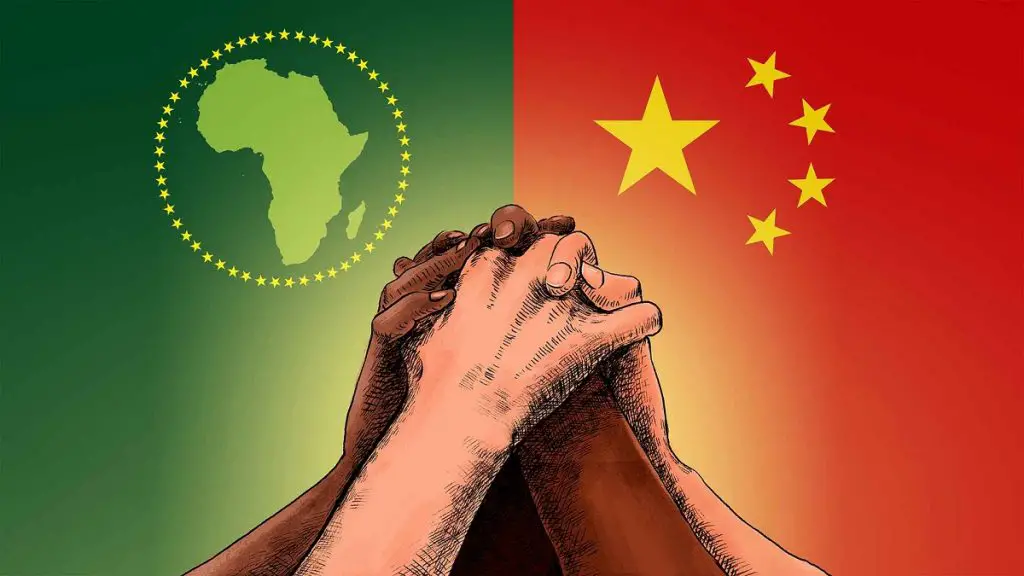For almost a decade now, China’s presence in Africa continues rumbling the West which has been relegated to an almost observer state by the Asian giant.
As the latest scramble for the resource-rich continent gathers pace and with the shift from aid dependence to homegrown solutions, China has been a welcome handyman in fixing problems through expensive infrastructural projects commissioned by leaders who have a huge legacy stake in them. However, these projects are raising more questions than answers from citizens and observers.
The questions arise from the fact that in real life, the economies have not been growing as much as they are depicted in papers and flamboyant GDP plans. Again, many nations are now stuck in the red since in a state of distress as loans fall due and with no means to service them.
Golden opportunities at bridge connecting 8 African countries
These African nations are having a hard time after the dalliances with the resource-hungry nation but despite this, whether planned or by chance, China is continuing with its Belt and Road Initiative (BRI) linking countries by developing infrastructure on different continents which could make transportation easy in the years to come.
In Africa, China could be said to have achieved much more than the West over the eight years it has been on the continent due to the mega projects which are transforming not only transportation but also skylines across several nations.
But, the BRI remains the pet project of the Chinese.
While other countries and their business interests are getting involved in the BRI, China stands to benefit the most since trade between China and countries connected to or linking to the BRI stood at US$6 trillion in 2017. This figure is likely to increase as the project continues attracting new trade connections.
The BRI covers over 60 per cent of the global population and accounting for a third of the world trade and Gross Domestic Product (GDP) making it one of the largest infrastructure programmes in the world’s history.
When fully implemented, the World Bank estimates that the BRI transport infrastructure can reduce travel times by up to 12 per cent. It could also increase trade by between 2.8 and 9.7 per cent for corridor economies and lift close to eight million people from extreme poverty.
In Africa, the BRI has the Lake Victoria-Mediterranean sea navigation line-linkage project, the Lamu Port-South Sudan-Ethiopia transport corridor, Northern corridor trade route in Africa linking the maritime port of Mombasa to countries of the Great Lakes region of Africa and Trans-Africa highway, the North-South Passage Cairo-Cape Town passway and the Port Sudan-Ethiopia railway connectivity.
With the adoption of the African Continental Free Trade Area (AfCFTA), the BRI could help inject new momentum in the way the movement of people and goods on the continent happens.
While the BRI has immense benefits for the continent, some countries are still holding out and have not signed to being party to the enormous project.
An estimated 25 per cent of all infrastructure development in Africa in the past 18 years has been by the Chinese government. African governments have contributed approximately 40 per cent of such projects.
Since the continent’s infrastructure has remained largely undeveloped, the infrastructure funding gap in Africa is above US$100 billion annually. Proponents say that the BRI can make a huge contribution in reducing the gap.
So what happens now?
Coronavirus: African leaders stuck with neglected, outdated healthcare systems
With the covid-19 coronavirus pandemic, the world is in a state of confusion since economic gains over the past few years have been eroded. This means that funding for any new projects may take time and the ones already running could be slowed down by the pandemic-induced recession.
For China, though, it seems that the country has recovered and is resuming operations. As such, it may continue with the BRI unfettered. However, countries who may not be able to keep up with their obligations will either defer their BRI projects or seek assistance from China.
The biggest question remains though if African nations can hack the challenges and continue with their infrastructure development projects.
With AfCFTA coming into force in July, may be the tide will turn in favour of the continent which heavily needs a lift for its youthful population.
